Into Mie’s world of tea. Savoring the genuine article in the place it was grown.
———Welcome to the World of Tea
I was born and raised in the city of Matsusaka in Mie Prefecture.
I’m a camera-girl who loves photography.
Recently, I’ve been seeing a lot of photos which showcase the rich green color of tea on social media and in magazines. Stylish Japanese tea cafes are flourishing in the big cities, and abroad it seems that there is a matcha (powdered green tea) boom happening.
In my city of Matsusaka, Matsusaka beef is famous, but there is a wealth of green tea production as well. In fact, Mie is the third largest tea producing prefecture in Japan, its most well known brand being “Ise Tea”.
I want to visit the tea fields to learn about, taste, and enjoy the real thing. With this desire in my heart, I grab my favorite Polaroid camera and head out in search of a story.
My first stop is at a Japanese tea cafe here in Matsusaka.
———A luxurious first cup, steeped at 60 degrees Celsius for 90 seconds. It’s not sweet, it’s savory.
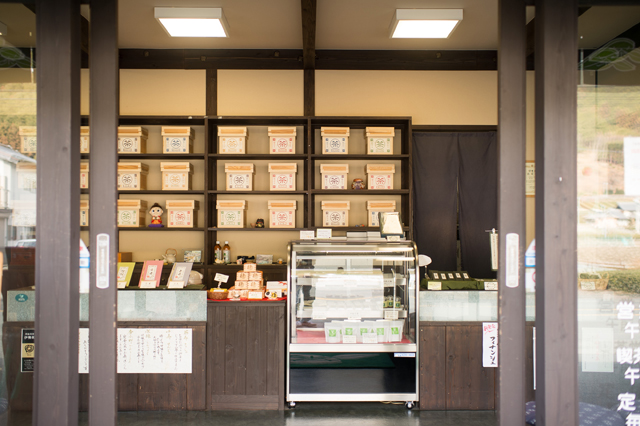
The aroma of tea greets me as I open the door.
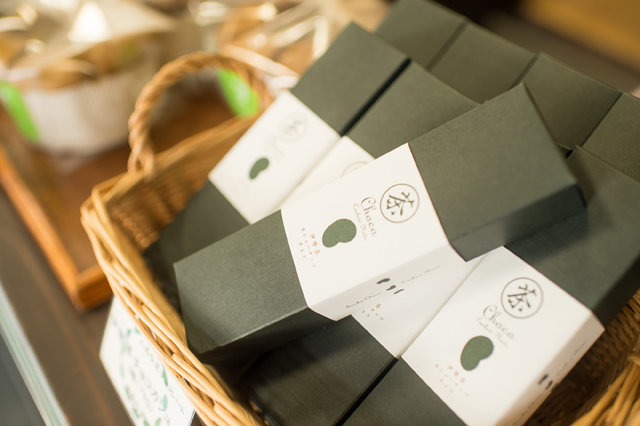
This isn’t just a cafe. They also sell Ise tea, as well as making and selling sweets made with Ise tea.
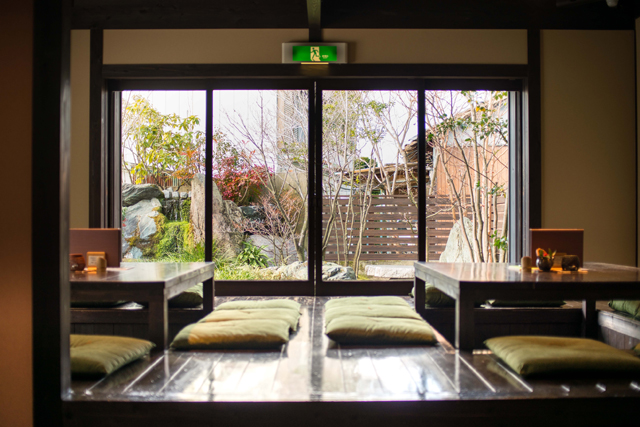
The cafe has such a nostalgic and familiar air about it that it makes me feel as if I’m coming home. Ah...it’s so relaxing….and I haven’t even had any tea yet!
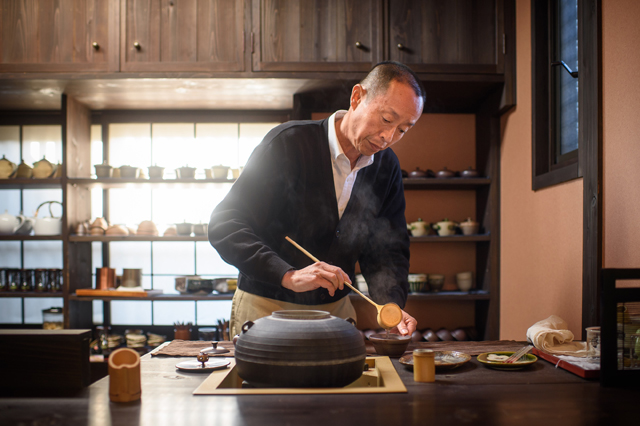
I sit at the counter as the shop’s tea master Hiroshi Matsumoto prepares tea for me. Taking boiling water from an iron urn, he cools it to 60 degrees Celsius before adding it to the pot which contains the tea leaves. Then we must wait for 90 seconds. The low temperature of the water allows the tea leaves to open slowly. My anticipation mounts as I try to imagine how the tea will taste.
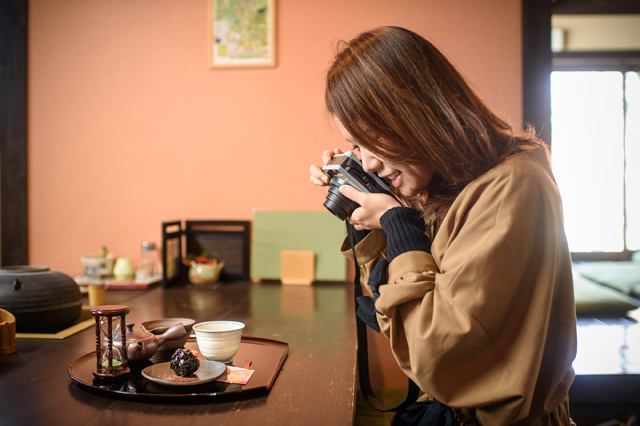
I can feel the time slowly passing, like the sand in the hourglass. I take some photos while I wait.
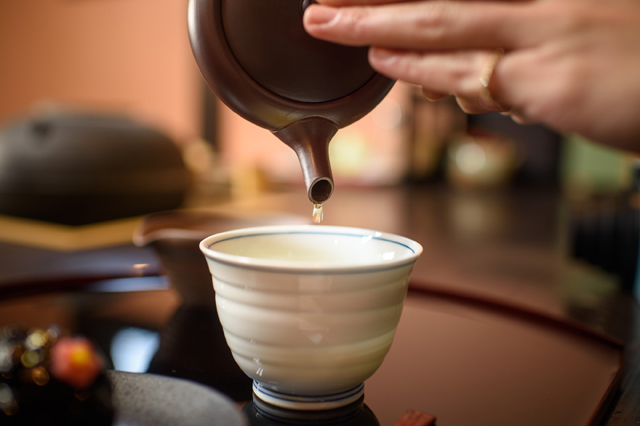
I can sense a luxurious richness in the tea that pours from the pot. The last drop falls into my cup.
Now then, how does it taste?
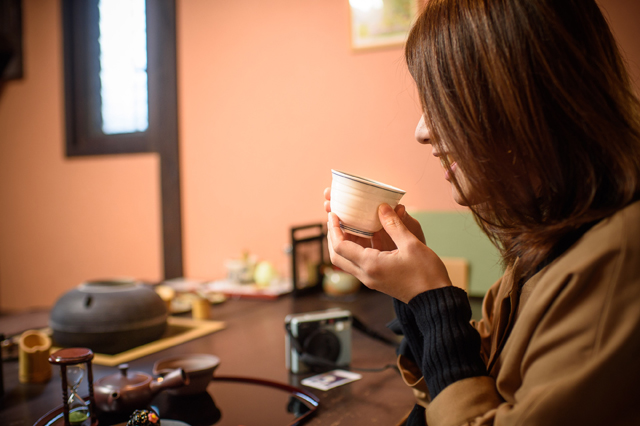
“Wow, it hardly tastes like tea at all! It isn’t bitter at all, very delicious!”
It has a flavor like dashi broth, with a smooth roundness I’ve never felt before. I can’t find the words to properly describe the taste.
“Is it … sweetness?” I ask.
“That is umami (savory).” Mr Matsumoto tells me with a pleased expression.
It seems that tea steeped slowly in warm water has a savory umami flavor that almost feels like sweetness, while bitterness is stronger in tea steeped in hot water.
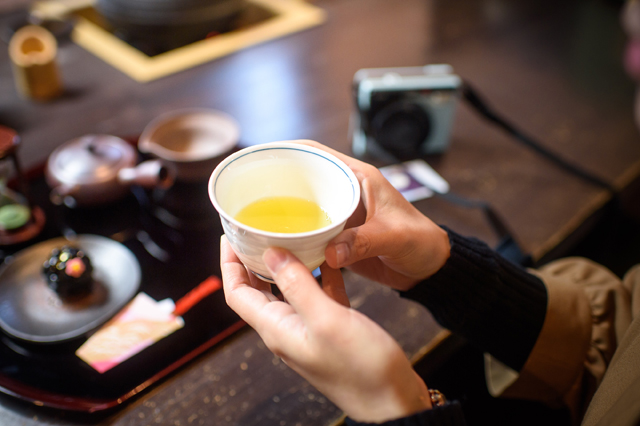
On to the second cup of tea.
The second steeping is done with hot water and is poured immediately into my cup. You wouldn’t know it’s the same tea. This time the flavor is a refreshing blend of bitter and sweet, quite similar to the tea we drink every day. It is delicious as well.
Mr. Matsumoto explains. “With the first cup, we can savor the flavor of the tea itself. From the second steeping on, the tea has a refreshing taste that we can enjoy alongside sweets and things.”
“This is a fine way to enjoy tea.” I nod.
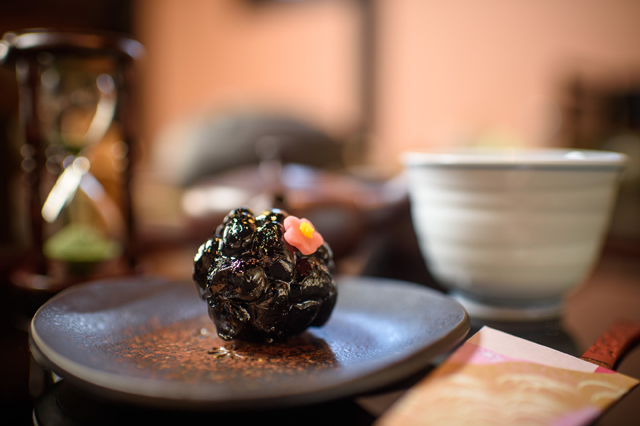
As I partake of my tea sweets, I feel the same luxuriant sense of relaxation that I sensed in my first cup of tea.
By the way, there are seasons for tea, aren’t there?
“Freshly harvested spring shincha tea has a characteristic fresh aroma, in contrast with autumn teas which have been stored, like kuradashi tea and tsubokiri tea. The leaves of these teas have mellowed and the tea has a distinctive umami flavor. Tea drinkers all have their own personal preferences. In summer there is mizudashi tea (made with cool water), so there are teas for all seasons. I think that with tea, one can enjoy the blessings of nature throughout the year.” Mr. Matsumoto says..
To be in a tea producing area, drinking tea as I learn about tea, is a truly indulgent experience. I hear that tea is being raised in fields near the cafe, and that I can go out to see them.
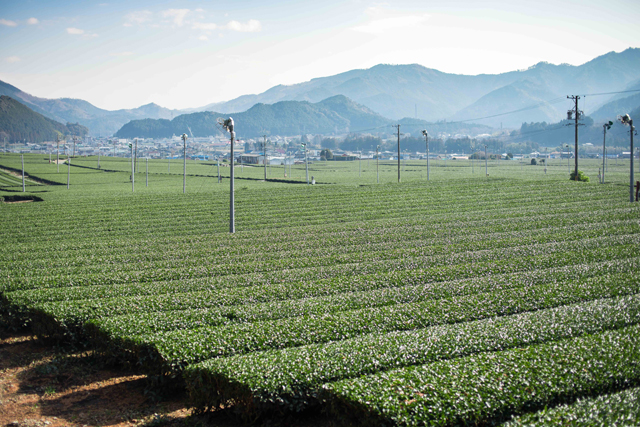
After a short drive, we arrive at the tea fields.
Having never really paid much attention to tea fields, looking over the fields after having partaken of such delicious tea I suddenly realize that they are all around us and I sense a feeling of affection welling up inside me.
The tea bushes are trimmed into the shape of kamaboko fish cakes, even their shape looks delicious. As I lower my gaze … these small brown berry-like things on the ground are?
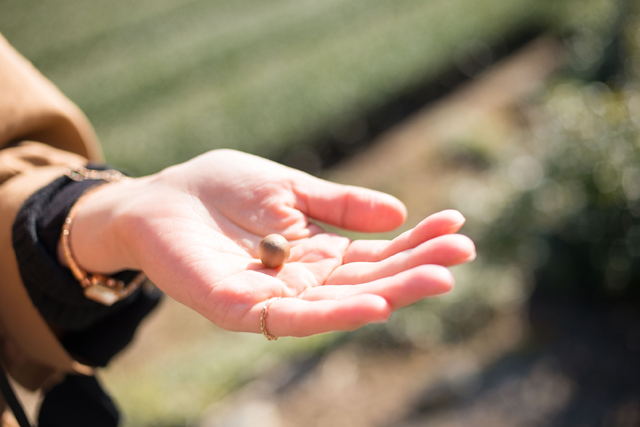
“What are these?” I ask.
“They’re called “chaboro”. They’re the seeds of the tea bush.” Mr. Matsumoto tells me.
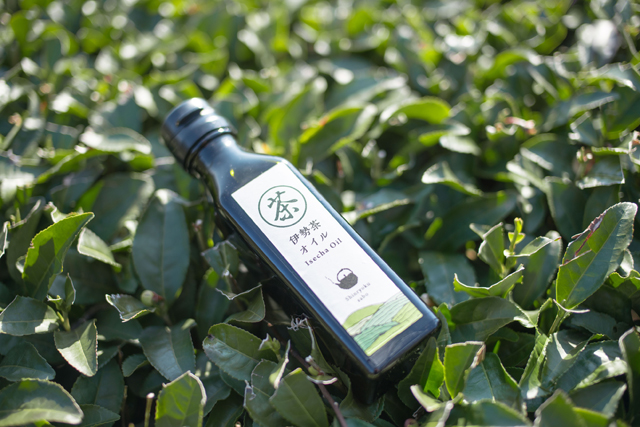
Mr. Matsumoto worked with a Mie-based food oil manufacturer to develop Ise Tea Oil, made using steamed tea leaves produced by his own company. He is currently working with the same manufacturer to develop a tea oil made from these chaboro tea seeds.
Having rediscovered and gotten a sense of the depth of local tea culture, I am eager to learn more. Mie is the third largest tea producer in Japan, but I hear it is the number one producer of a tea called “Kabuse Tea”.
So, what IS kabuse tea?
Also, how is kabuse tea enjoyed in the place it is made?
To find out, I make the one-hour drive to Suizawa, in the city of Yokkaichi, where kabuse tea is produced.
———Suizawa tea is making its debut on the world stage
With an annual production of about 370 tons, the tea company I visit is the largest tea producer in Mie. Of course, they raise kabuse tea in their fields.
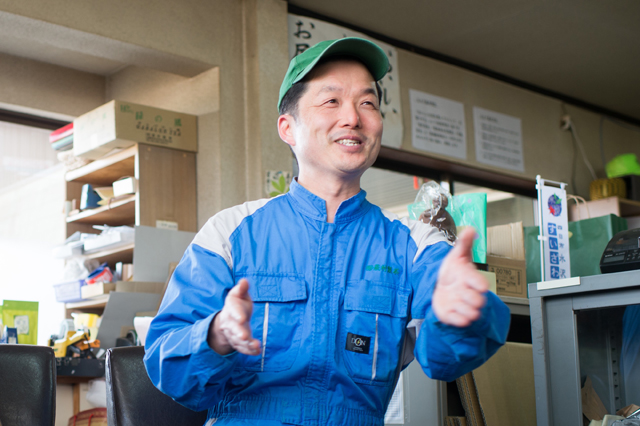
So, what in the world is kabuse tea?
I ask Mr. Hiroshi Hagimura, who grins happily.
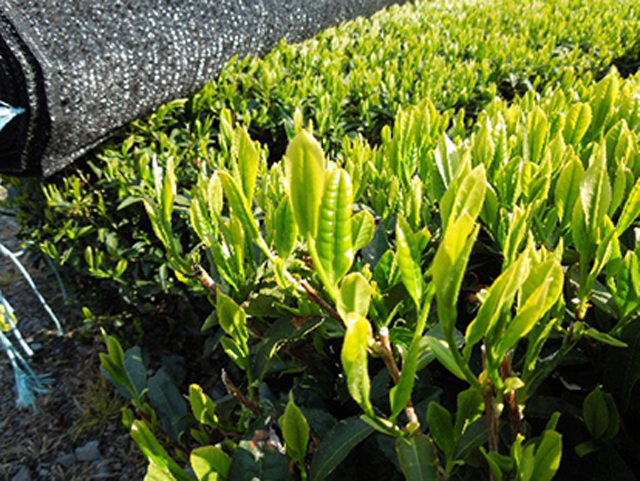
“Two or three weeks after the new tea leaves sprout, the tea bushes are covered with black netting. That’s why it’s called kabuse (covered) tea. The netting is the key point. It’s mesh, not cloth, so some sunlight comes through. The new leaves work hard to photosynthesize with that light. Through this process, the leaves take on a nicer color, and the umami compounds in the tea leaves increase, resulting in tea leaves with a noticeable sweetness.” says Mr. Hagimura.
“But why is Suizawa such a suitable place for growing kabuse tea?” I ask.
“The groundwater here is scrubbed clean by the Suzuka mountains, and the soil is fairly coarse, so it drains well. This creates the perfect environment for raising kabuse tea. In the past, tea from Suizawa was exported to Kyoto, where was renowned for its lovely color. When brewed with good water, kabuse tea turns beautiful shade of pale green that looks almost blue. This is what makes it such a high quality product, on nearly the same level as gyokuro tea.
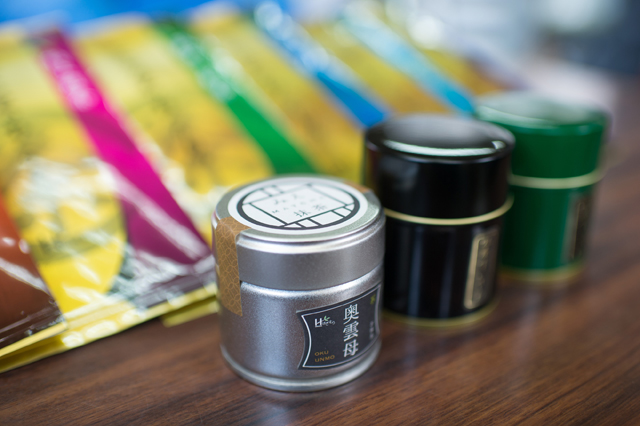
Mr. Hagimura, who explained kabuse tea so clearly, is a certified Japanese tea instructor. During the Ise Shima G7 Summit, he handed out “welcome tea” made from kabuse tea at the Summit’s International Media Center.
“Many cafes use matcha (powdered green tea) made from Suizawa kabuse tea.” he adds.
In addition, his company uses fertilizer made from composted coffee grounds in its tea fields, with the aim of creating a sustainable society. Furthermore, their matcha is being exported to America and other countries around the world.
Matcha is strongly associated with Kyoto, so I am surprised to learn that Mie’s matcha is also used abroad.
“The word ‘matcha’ is becoming part of the global lingua franca!” says Mr. Hagimura.
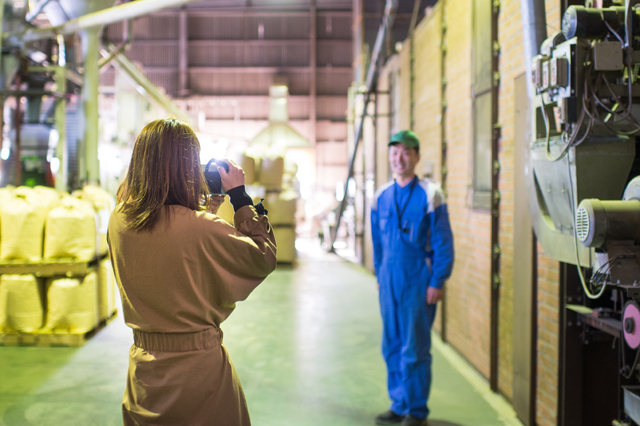
Now that I have gained some knowledge about kabuse tea, I’m ready to take the time to carefully savor its flavor. A five minute drive brings me to a cafe where kabuse tea is served.
———Delicious kabuse tea, beautiful tea ware. A completely wonderful time.
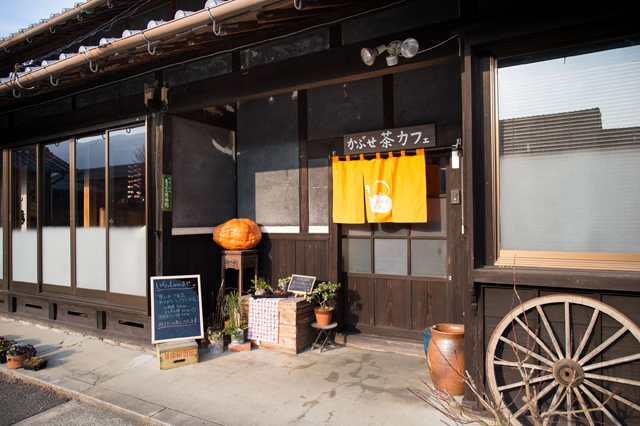
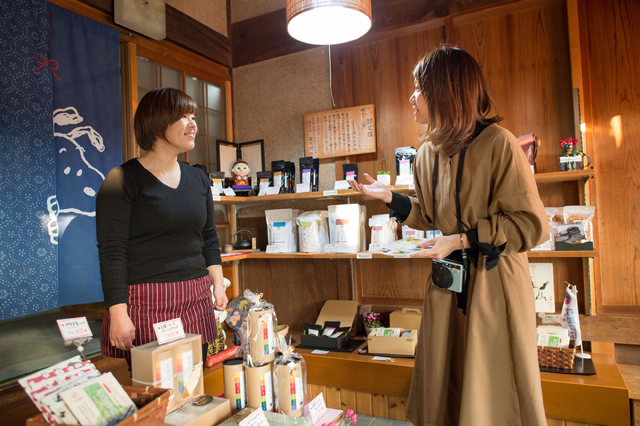
As I part the noren curtain to enter the old house turned cafe, I am greeted with a warm smile by the owner, Kana Shimizu.
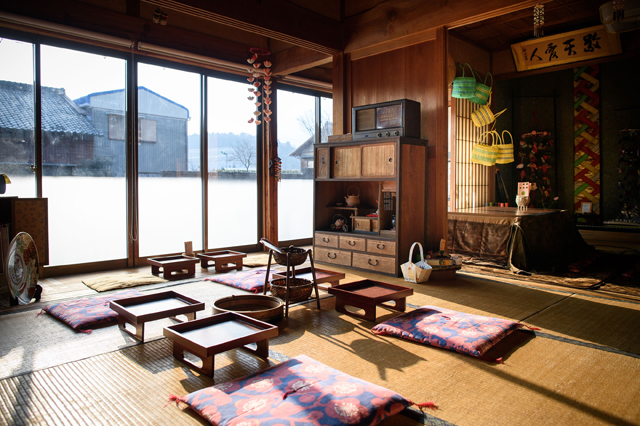
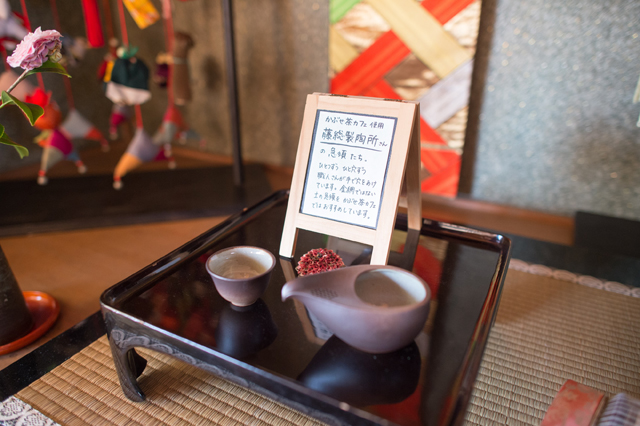
Inside the shop, I find a beautiful rounded teapot. Bankoyaki is a famous type of ceramic from Yokkaichi. This teapot, named Hitoshizuku (a single drop), is bankoyaki.
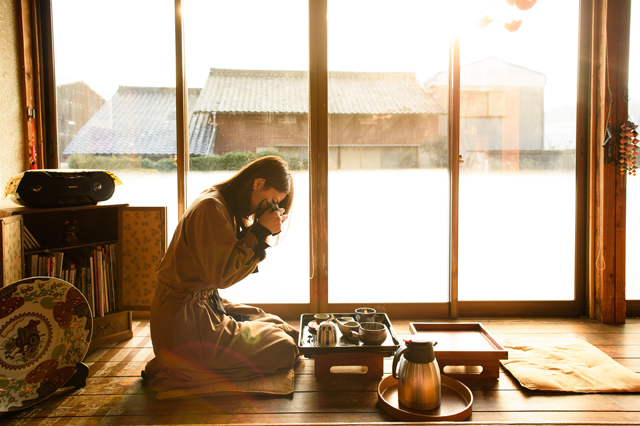
I can feel the warm sunlight from the veranda.
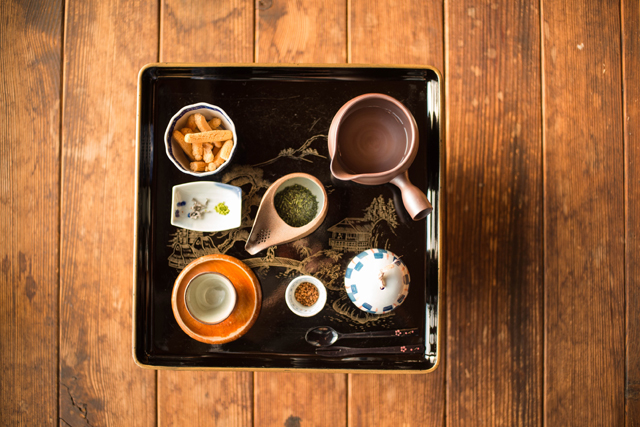
From the cooling pot, I pour some warm water into the little teapot.
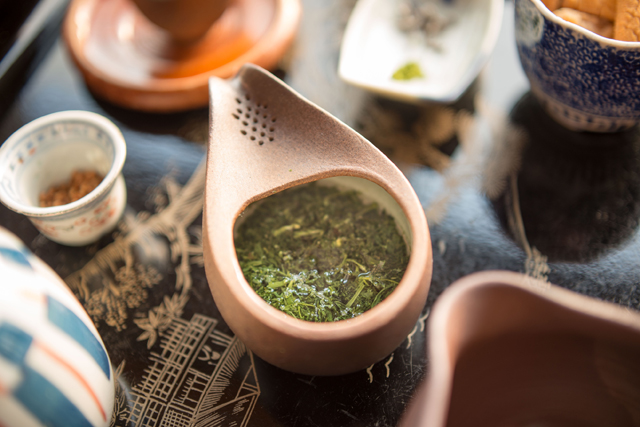
The teapot has no lid, so the fragrance of tea fills the room.
The tea leaves open slowly in the 60 degree water. It is a few moments of leisure.
The tea leaves have opened, so bit by bit I pour tea into my cup.
It is full of umami flavor, right to the last drop. I take a sip...
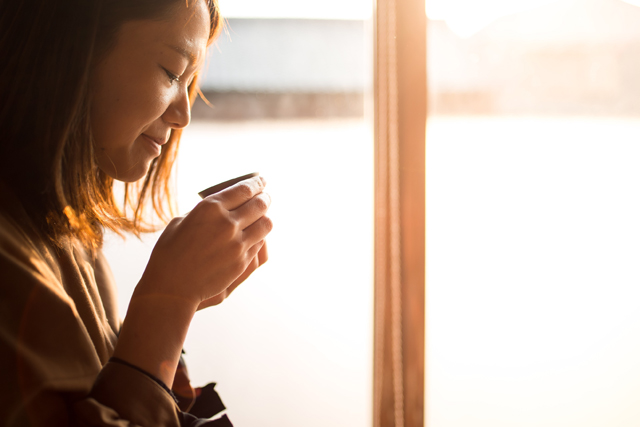
I am … a happy person.
As the umami fills my mouth, I yearn for this moment to last forever.
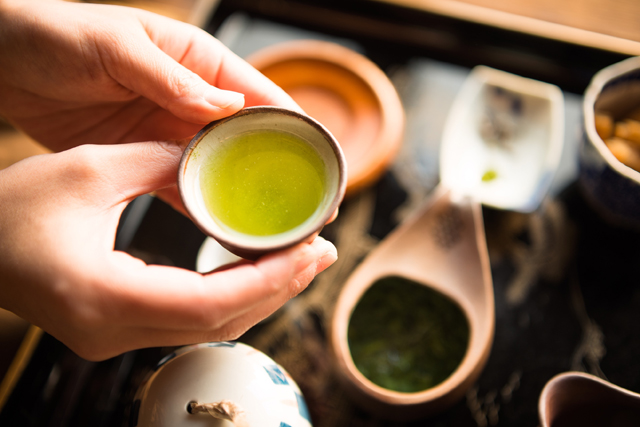
A fresh green color.
Wonderful Kabuse tea.
The second cup of tea, made with hot water, is refreshing.
“Our regular customers have many different ways of steeping their tea. You can get about ten cups from one portion of tea leaves. Enjoy it however you like!” Ms. Shimizu says.
The third cup, then the fourth...
The world of tea is so deep, I want to try so many things.
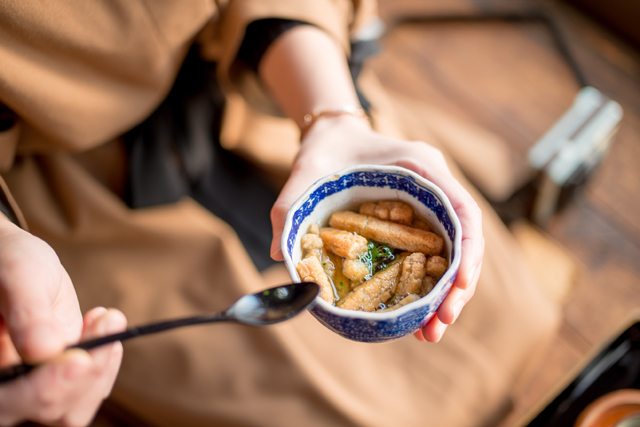
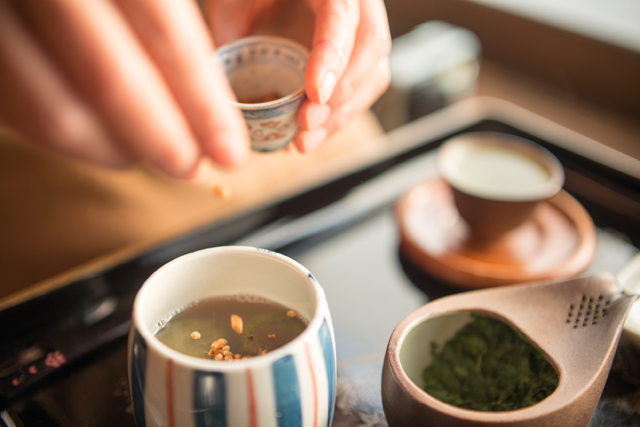
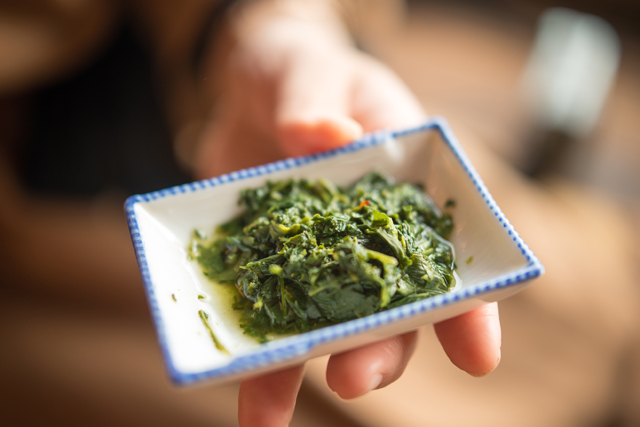
I partake of tea poured over rice crackers, sweet bean soup, even spent kabuse tea leaves flavored with ponzu. Before I know it, I have had about ten cups of tea!
Having enjoyed such a delicious time, I step out of the cafe under a setting sun.
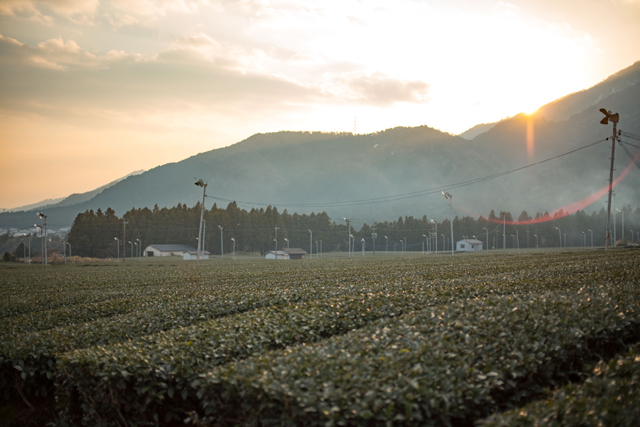
I take a stroll in the nearby teafields to enjoy the sunset.
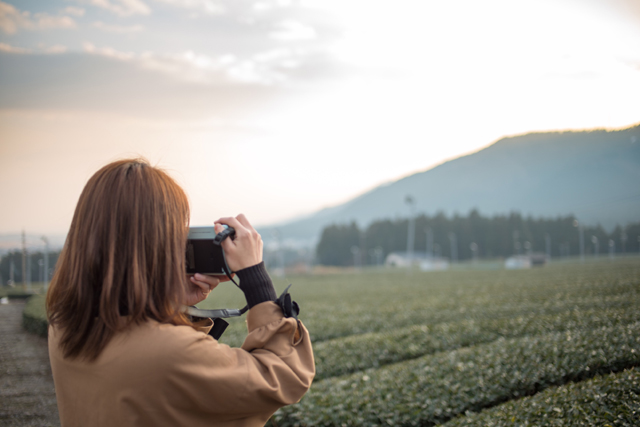
Click.
I haven’t spent such a luxurious time in a very long time.
As I realize that this time was created for me by tea, nostalgic memories come rushing back. The days when people would gather at the family home, chatting as the tea steeped. Being alone on a cold night, slowly sipping a warm cup of tea. Belly full after a good meal, a soothing single cup of tea...
Tea has been a part our lives for a long time, making happy moments for us.
That thought occurs to me as I look over my photos from today, and I wonder what else the fragrance of tea will revive in my heart.
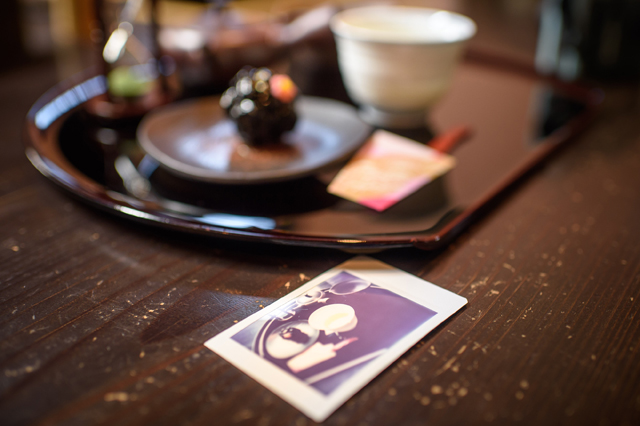
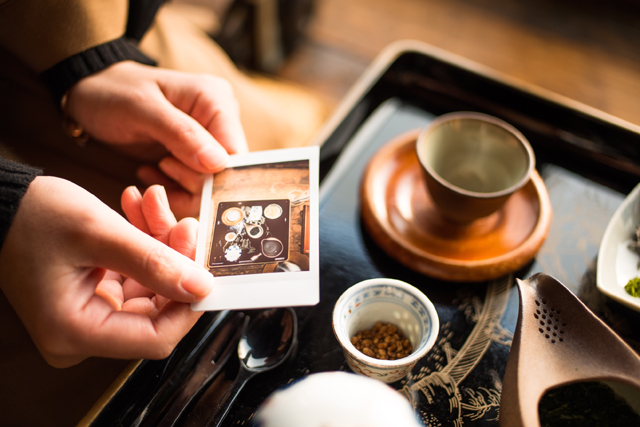
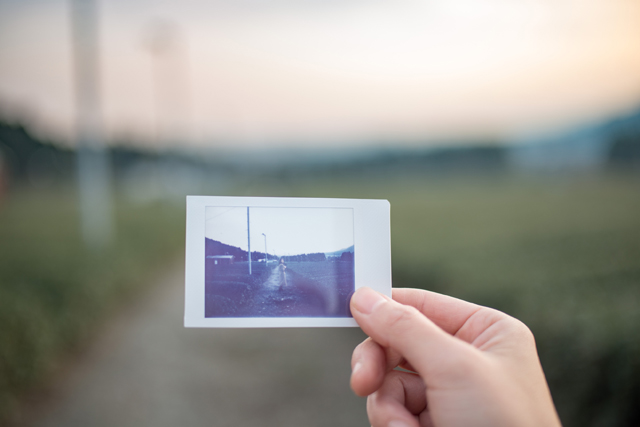
No one knows what the future may hold, but I think that I want to savor a happy life, filled with tea.
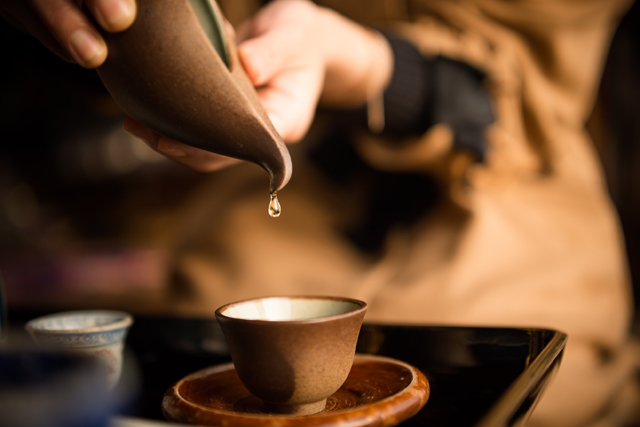
Right to the last drop.
January 16, 2018
Produced for Web Magazine OTONAMIE
By Nana Hashimoto (OTONAMIE Reporter)
Produced with the cooperation of:
Shinrakusabo Honten (Shinrokusabo LLC)
Mie Ken Matsusaka Shi Iinan Cho Kayumi 4209-2
Tel 0598-32-5588
HP http://www.shinsabo.com
Facebook https://www.facebook.com/shinryokusabo/
Hagimura Seicha LLC
Mie Ken Yokkaichi Shi Suizawa Cho 3285
Tel 059-329-2204
HP http://hagimura.jp
Facebook https://www.facebook.com/hagimura.jp/
Kabuse Tea Cafe (Marushige Shimizu Seicha LLC)
Mie Ken Yokkaichi Shi Suizawa Cho 998
Tel 059-329-2611
HP http://www.marushige-cha.jp